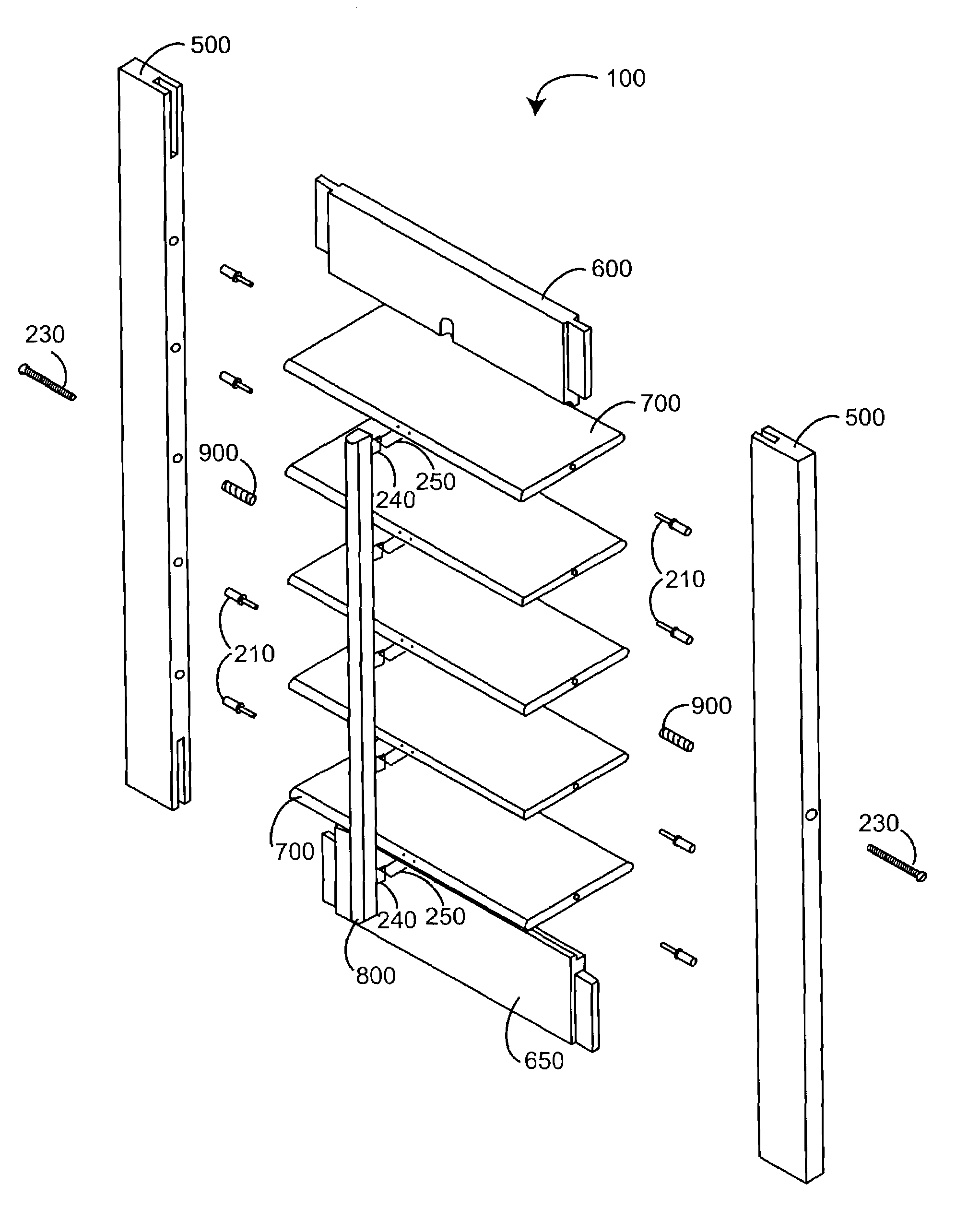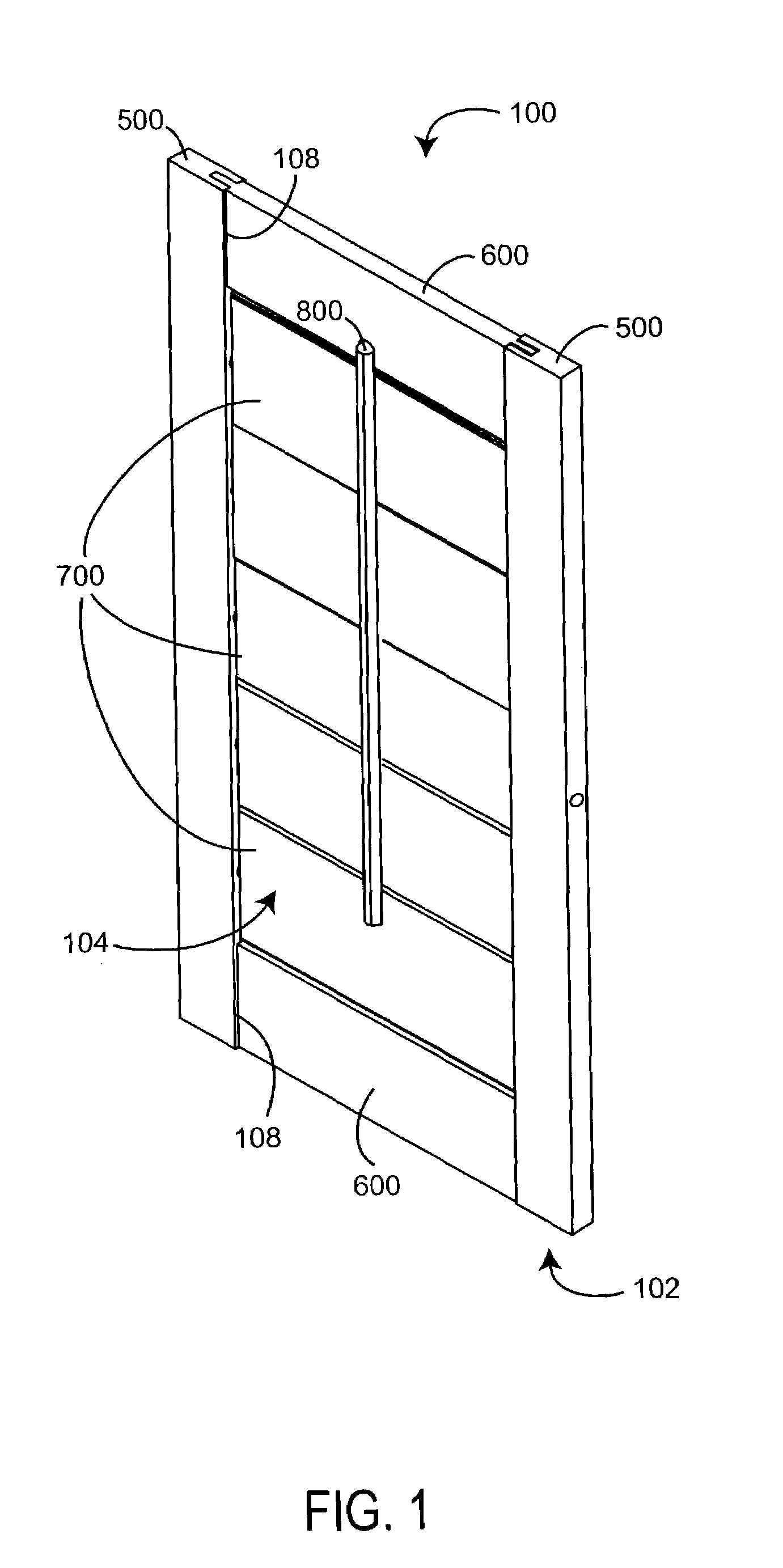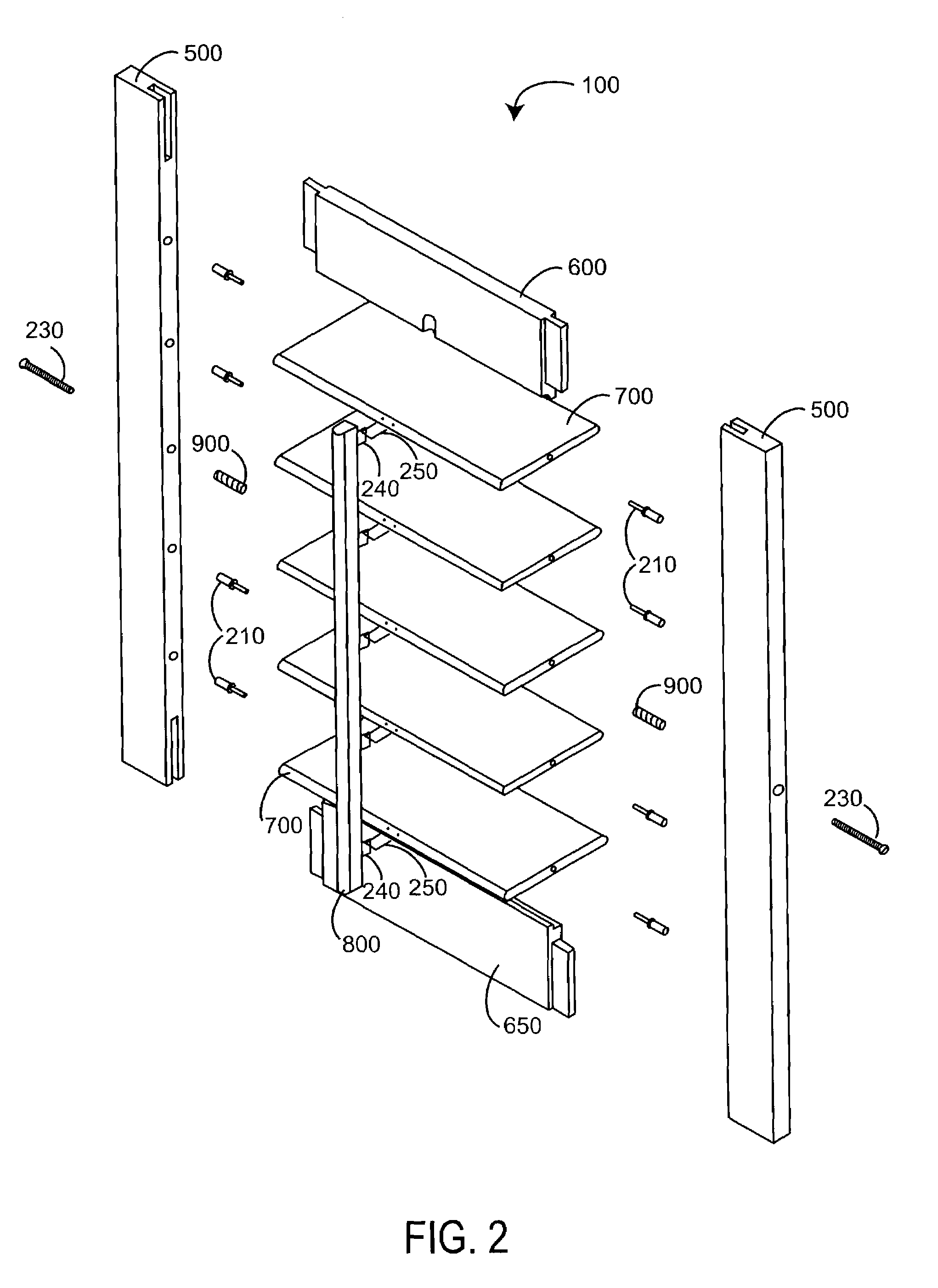Method of manufacturing a prefinished fiberboard shutter
- Summary
- Abstract
- Description
- Claims
- Application Information
AI Technical Summary
Benefits of technology
Problems solved by technology
Method used
Image
Examples
embodiment 1400
[0067]FIGS. 14A–G illustrate a full groove stile embodiment 1400, including a stile base 1500 (FIGS. 15A–C) and a groove insert 1600 (FIGS. 16A–C). An assembled full groove stile 1400 corresponds generally in configuration and function to the partial groove stile 500 (FIGS. 5A–D), described above. A pair of stiles 1400 provide mounts for louvers 700 (FIG. 1), having a number of pin holes 1610 spaced at regular intervals along the inside edge 1507 and configured to receive louver pins 210 (FIG. 2). Also, the stile 1400 has one or more tension adjustment holes 1550 configured to accept a tensioning screw 230 (FIG. 2) for louver tension control and frame stabilization, as described above.
[0068]As shown in FIGS. 14A–G, the full groove stile 1400 differs from the partial groove stile 500 (FIGS. 5A–D) in several respects. Advantageously, the full groove stile 1400 has two subcomponents, a stile base 1500 and a groove insert 1600. The stile base 1500 has an end-to-end groove 1510 instead o...
embodiment 150
[0075]FIG. 19 illustrates a rear-linked shutter embodiment 150 utilizing full groove stiles 1400 and capped louvers 1700. The rear-linked shutter 150 does not have a tilt bar 800 (FIG. 2), but instead has a link bar 1900. The link bar 1900 has multiple link bar holes 1910 adapted to attach to each of multiple louvers 1700 via snap-fit buttons 1880 (FIG. 18C). In one embodiment, the link bar 1900 is constructed of a thin planar, elongated, flexible material, such as plastic, and adapted to fit in the space between the louvers 1700 and stiles 1400. Advantageously, the view through the shutter 150 is not blocked by a tilt bar. Instead, the louvers 1700 are opened and closed by moving an individual louver 1700, which moves all louvers via the link bar 1900. Another advantage is that a tilt bar notch is eliminated in the top spreader, so that the spreaders 650 are the same part, reducing the number of parts and shutter manufacturing steps.
PUM
| Property | Measurement | Unit |
|---|---|---|
| Length | aaaaa | aaaaa |
| Width | aaaaa | aaaaa |
Abstract
Description
Claims
Application Information
 Login to View More
Login to View More - R&D
- Intellectual Property
- Life Sciences
- Materials
- Tech Scout
- Unparalleled Data Quality
- Higher Quality Content
- 60% Fewer Hallucinations
Browse by: Latest US Patents, China's latest patents, Technical Efficacy Thesaurus, Application Domain, Technology Topic, Popular Technical Reports.
© 2025 PatSnap. All rights reserved.Legal|Privacy policy|Modern Slavery Act Transparency Statement|Sitemap|About US| Contact US: help@patsnap.com



